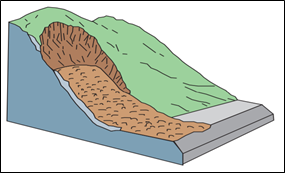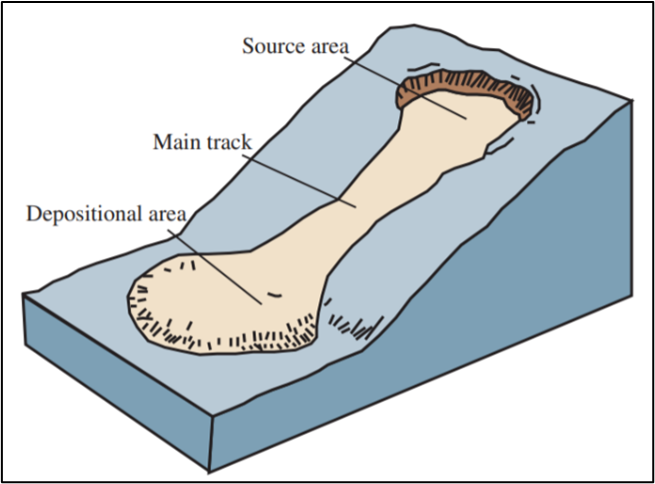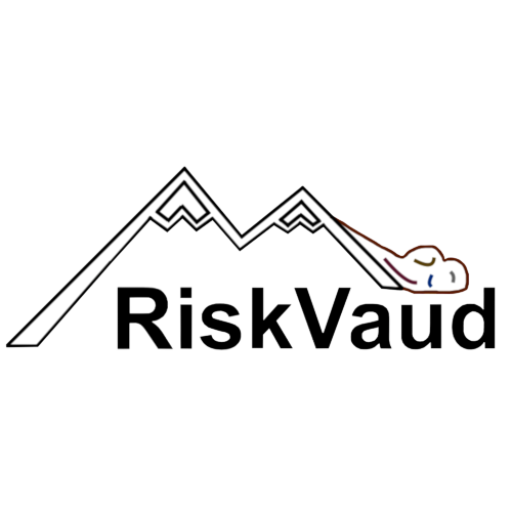Flows
by Angie Ramirez
A flow corresponds to spatially continuous movements with ephemeral, closely spaced shear surfaces, which are usually not preserved. The velocity distribution in the moved mass resembles that of a viscous fluid. Depending on the water content, mobility, and movement evolution, it could generate a complex event, starting as a slide and continuing its movement as a flow.
Debris avalanche
This kind of flow corresponds to a vast movement, extremely rapid (up to 100 meters/sec) and usually formed when an unstable slope collapses and the tiny fragments generated are immediately transported away from the slope.
These events can cause a lot of deaths and losses, as they are highly fast-moving and are unlikely to be able to deal with once they start.

Schematic of a debris avalanche. (From Highland & Bobrowsky, 2008)
Earthflow
these represent relatively slow movement and are characterized by having an “hourglass” shape on low to moderate slopes. In general, the moved material corresponds to fine-grained soil (clay or silt), but they also can affect clay-bearing bedrock highly weathered
Although they usually have a slow movement, they can also move rapidly and generate big catastrophes.

Schematic of an earthflow. (From Highland & Bobrowsky, 2008)
Creep
This is an informal term to refer to a very slow earthflow (speed lower than 1 meter per decade). The movement generates deformation but can’t create shear failure. This can be considered the most common type of landslide worldwide.
It is easily detected and could be controlled by proper drainage of the land, slope modification, or building retaining walls.

Schematic of a creep. (From Highland & Bobrowsky, 2008)
